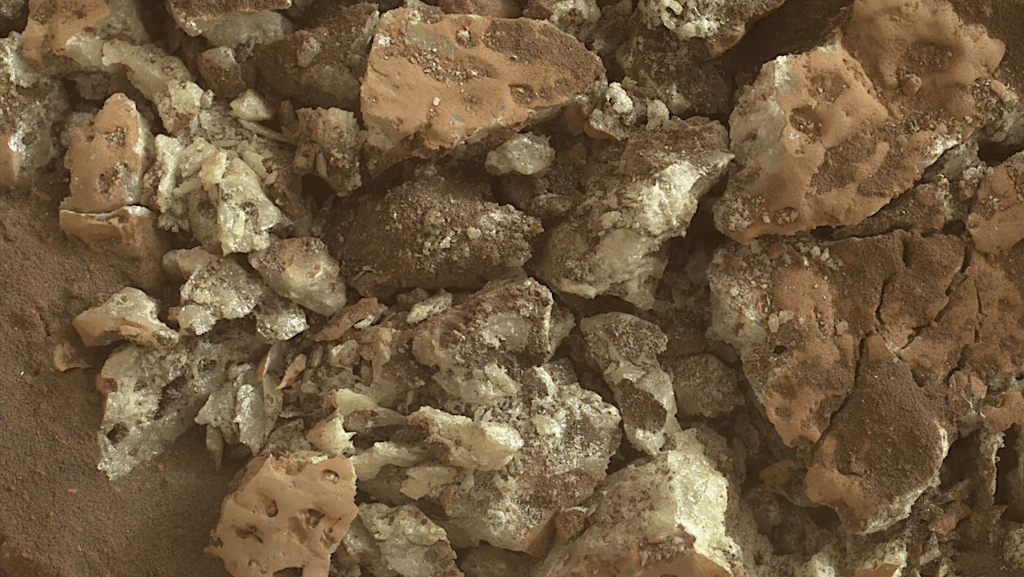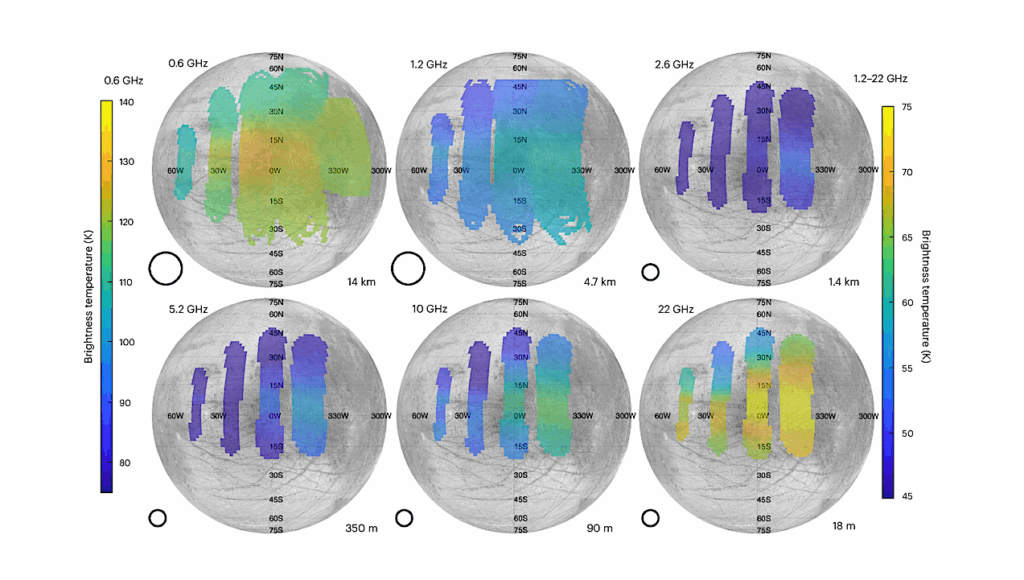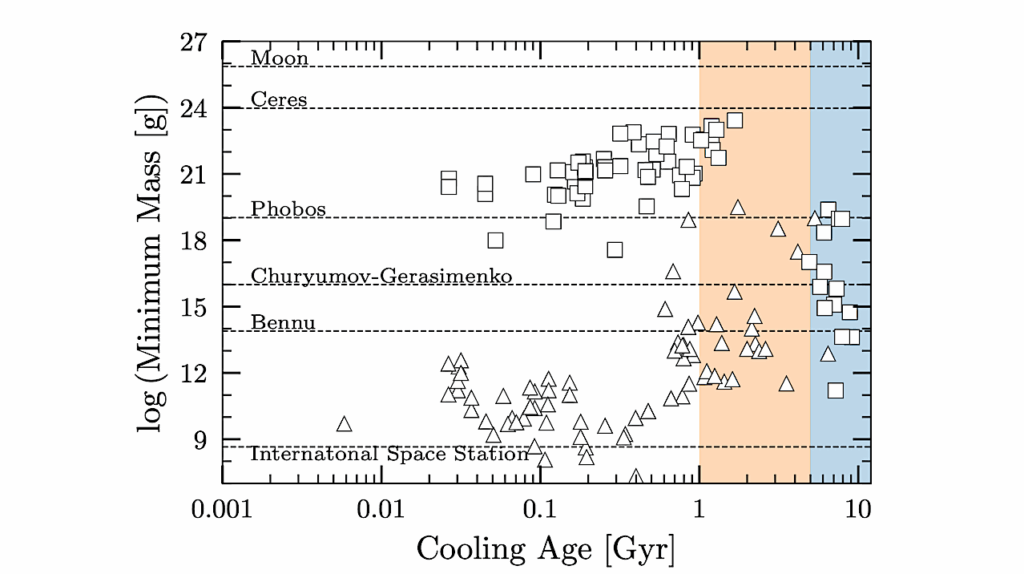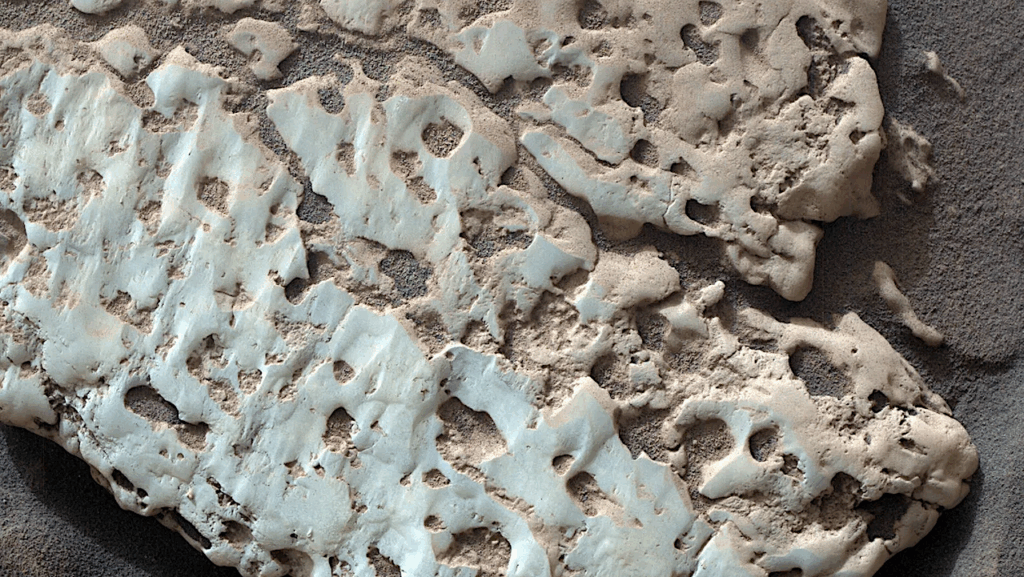Orbital Eccentricity Led To A Young Underground Ocean On Mimas
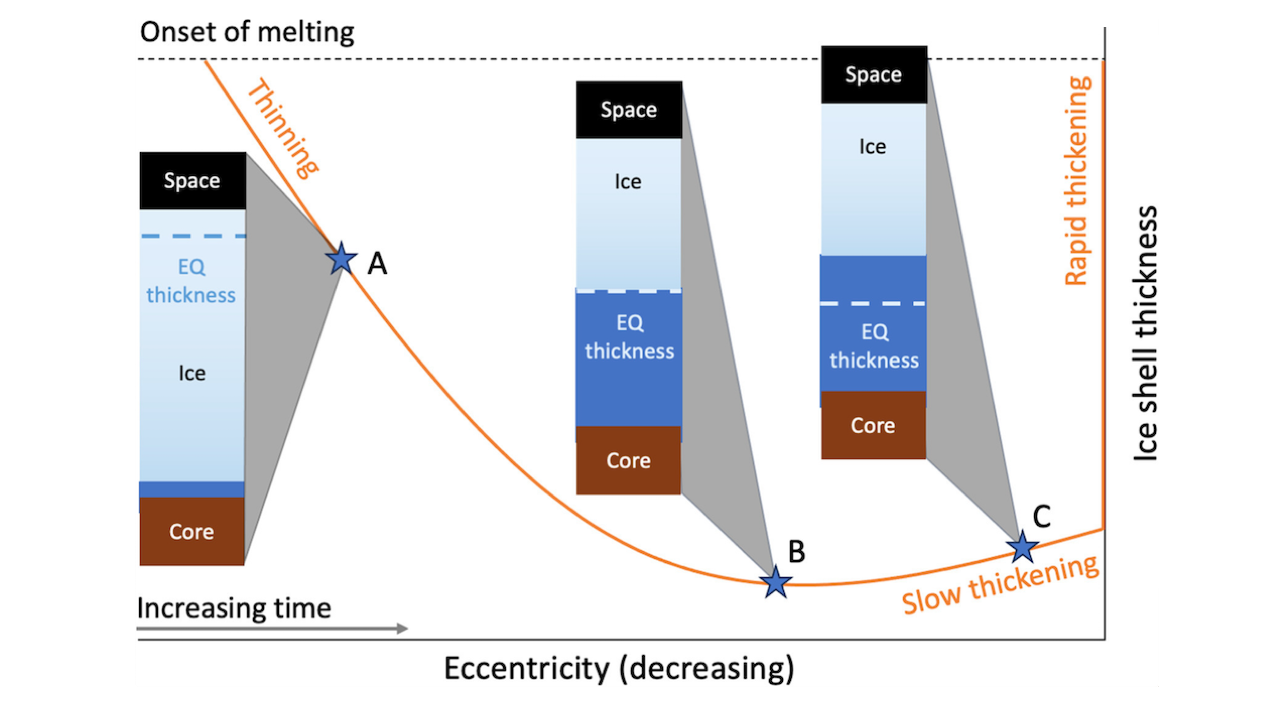
Saturn’s moon Mimas could have grown a huge underground ocean as its orbital eccentricity decreased to its present value and caused its icy shell to melt and thin.
“In our previous work, we found that for Mimas to be an ocean world today, it must have had a much thicker icy shell in the past. But because Mimas’ eccentricity would have been even higher in the past, the pathway to get from thick ice to thinner ice was less clear,” said Planetary Science Institute Senior Scientist Matthew E. Walker. “In this work we showed that there is a pathway for the ice shell to be thinning currently even as the eccentricity is dropping due to tidal heating, but the ocean must be very young, geologically speaking.”
Walker is coauthor of “The evolution of a young ocean within Mimas” that appears in Earth and Planetary Science Letters. Alyssa Rose Rhoden of the Southwest Research Institute is lead author.
“Eccentricity is what drives the tidal heating. Right now it is very high as compared with other active ocean moons, like neighboring Enceladus. We think that tidal heating is the heat source responsible for currently thinning the shell,” Walker said. “Tidal heating is not free energy though, so as it melts the shell, it pulls energy out of the orbit, which drops that eccentricity until it eventually circularizes it and shuts the whole thing down.”
The onset of melting had to occur when Mimas’ eccentricity was two to three times the present value. A thinning ice shell over the past 10 million years of Mimas’ evolution is consistent with its geology.
“Generally when we think of ocean worlds we don’t see a lot of craters because the environment is resurfaced and ends up erasing them, like Europa or the south pole of Enceladus. The shape, central peak, and undisrupted interior of Herschel crater require that the shell must have been thicker in the past, when Herschel formed. In order to get the crater morphology that we observe, the shell must have been at least 55 kilometers when it got hit,” Walker said. “Craters can provide clues as to the presence of an ocean and the thickness of the ice shell through their morphology – such as the ratio between the crater diameter and its depth and the existence of a central peak.”
Mimas has a radius of just under 200 kilometers. The thickness of the outer hydrosphere, made up of ice and liquid, is roughly estimated to be around 70 kilometers. The current estimates of ice shell thickness are 20 to 30 kilometers, based on the precession (the rotational motion of the axis of a spinning body), or a narrower range of 24 to 31 kilometers from the libration (a slight wobble in the rotation rate of the moon that makes it appear to nod back and forth) measurements, leaving an ocean that is about 40 to 45 kilometers deep before it hits the rock.
“We may be seeing Mimas at a particularly interesting time. In order to match the current eccentricity and the thickness constraints based on the libration info, we think this whole thing must have started off no more than about 25 million years ago. In other words, we think Mimas was completely frozen until 10 to 25 million years ago, at which point its ice shell began melting. What changed to kick off that epoch of melting is still under investigation,” Walker said.
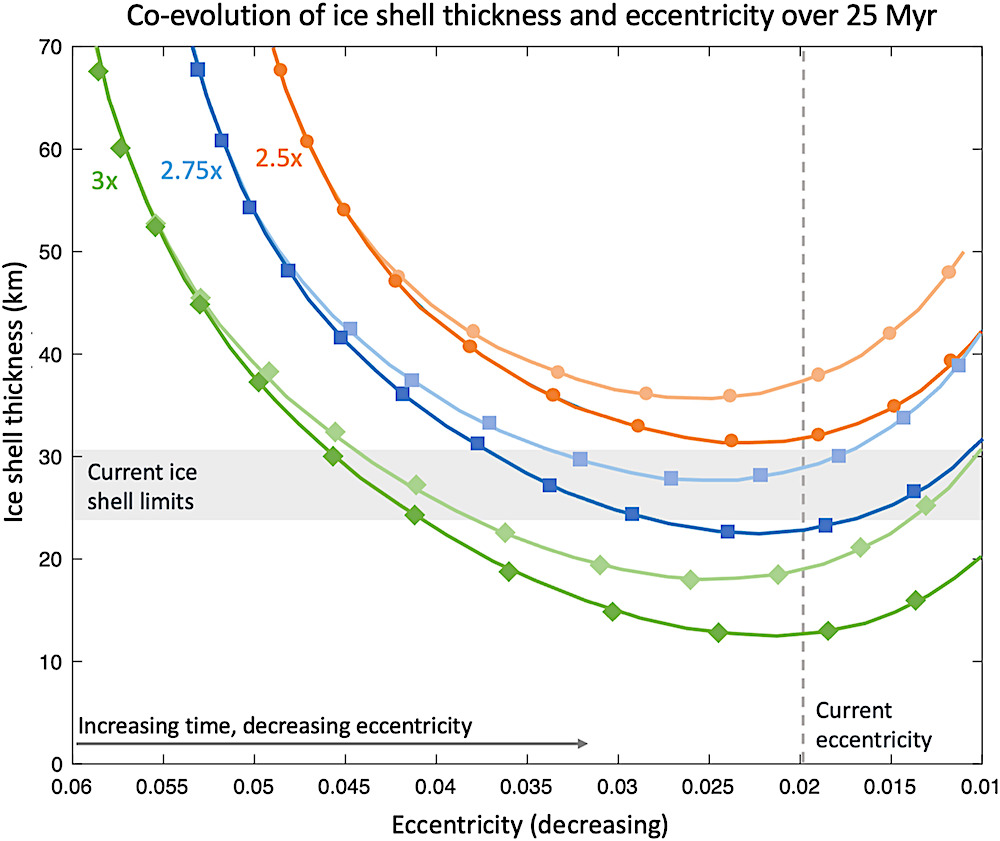
Evolutions of Mimas’ ice shell thickness (y-axis) and eccentricity (x-axis, inverted) show the same behavior over a wide range of initial conditions. From the onset of melting, and for most of the subsequent evolution, the ice shell thins and the ocean grows even as the eccentricity drops. After reaching the equilibrium ice shell thickness, further eccentricity decay leads to thickening of the ice shell and loss of the ocean. Colors and shape markers represent different initial eccentricity values, as marked. The darker shades include high core dissipation and a high surface temperature (80 K) – leading to more rapid shell thinning – while lighter shades include low core dissipation and low surface temperature (60 K). The grey shaded region indicates the range of estimated present-day ice shell thicknesses from the libration measurements, and the vertical dashed line is Mimas’ current eccentricity. Credit: Alyssa Rhdoen.
THE PLANETARY SCIENCE INSTITUTE:
The Planetary Science Institute is a private, nonprofit 501(c)(3) corporation dedicated to Solar System exploration. It is headquartered in Tucson, Arizona, where it was founded in 1972.
PSI scientists are involved in numerous NASA and international missions, the study of Mars and other planets, the Moon, asteroids, comets, interplanetary dust, impact physics, the origin of the Solar System, extra-solar planet formation, dynamics, the rise of life, and other areas of research. They conduct fieldwork on all continents around the world. They also are actively involved in science education and public outreach through school programs, children’s books, popular science books and art.
PSI scientists are based in 35 states and the District of Columbia.



